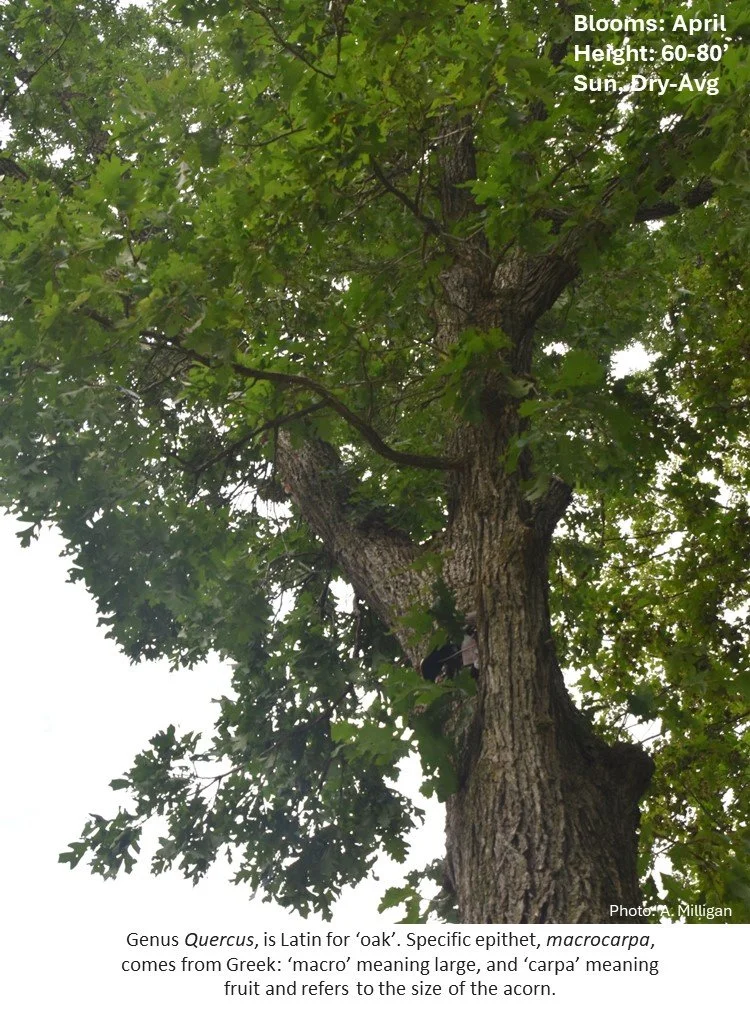Latin for Gardeners
January’s Native Maryland Plant
Quercus macrocarpa Michx.
(KWER-kus ma-kro-CAR-pa)
Common Name: Bur Oak, Mossycup Oak
Happy New Year Stewards! I hope you’re enjoying this cold and snowy January – brr! What a great time to get outside, contemplate the beauty of nature and consider the ways you can apply your stewardship in the year ahead. This month’s plant is a remarkable oak, the Quercus macrocarpa. It has an impressive acorn among acorns: it’s the largest in North America and it’s almost entirely capped in what appears to be a fringed beanie – a hat suitable for the weather we’re having. Perhaps not surprisingly, this plant has high cold and drought tolerance.
The Bur oak is rare in Maryland, it’s more common in the Midwest and the plains states. Two of the finest Bur oaks I’ve seen were in Baraboo, Wisconsin, at the Leopold Center (1). Living among mainly pine trees - they frame the Aldo Leopold home, a humble home he referred to as “The Shack” (it was previously a chicken coop). This is where he raised his family, observed nature, and coined the term “Land Ethic (2)” something he famously wrote about in, A Sand County Almanac. In this book he dedicates multiple pages to the Bur Oak. He writes, “Bur oak is the only tree that can stand up to a prairie fire and live.” In fact, the bur oaks’ fire resistance is the highest among oaks, its thick corky bark protects the living tissue in the cambium (3) layer, another reason this oak is more abundant in savannas and prairies where fire is common.
“When we see land as a community to which we belong, we may begin to use it with love and respect.”
Like the opening line in so many celebrated books that are often analyzed and discussed, the opening line in A Sand County Almanac deserves deliberation. It reads: “There are some who can live without wild things, and some who cannot.” Which kind are you?
We each have a lot to learn about land ethics and how even small changes can make significant positive differences in our lives and the lives around us. We can begin by simply using more impactful native plants in our home environments and on projects we lead.
1 Headquarters for the Aldo Leopold Foundation
2 A philosophy about the moral responsibility of humans to the natural world.
3 the growing part of the trunk where new bark and new wood are produced
Alison Milligan – MG/MN 2013
Watershed Steward Class 7/Anne Arundel Tree Trooper
Chesapeake Bay Landscape Professional (CBLP)
aligmilligan@gmail.com




